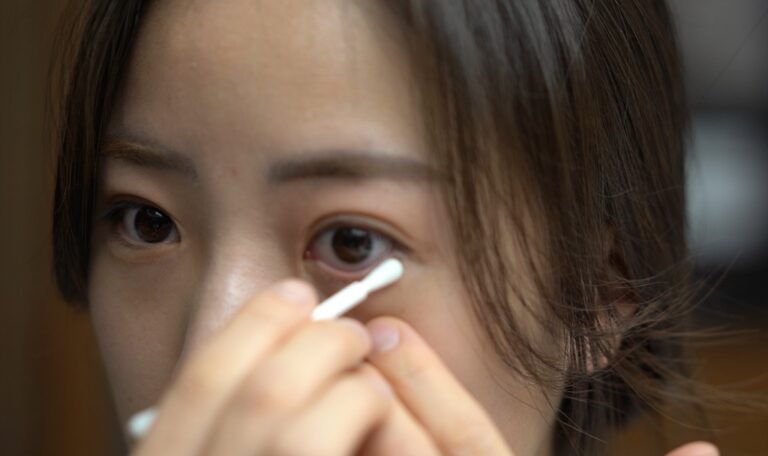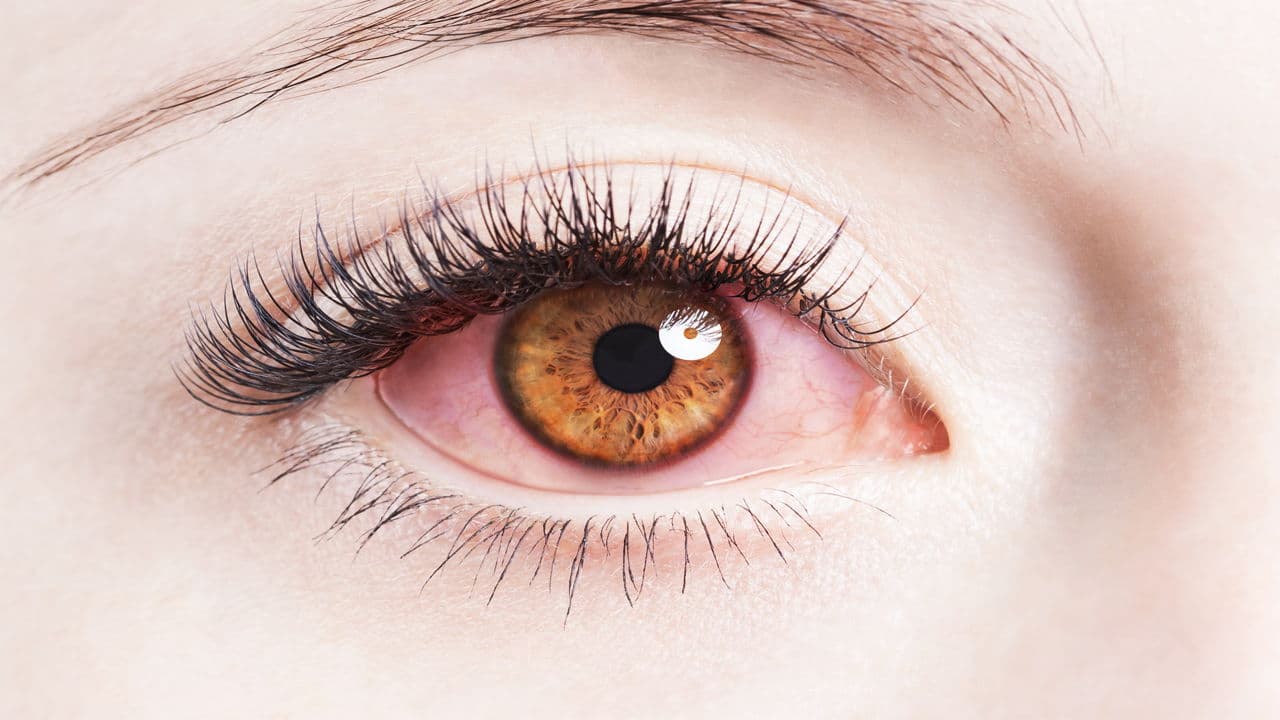Blepharitis is a case that happens in the eyes due to inflammation of the eyelids that becomes red, irritated, and itchy because of dandruff-like scales that appear on the eyelashes.
Bacteria or a skin condition, such as scalp dandruff or rosacea is a common result to make eye disorder.
Types of blepharitis:
Anterior
Occurs at the outer front edge of the eyelid where the eyelashes stick.
Posterior eyelid inflammation
Affects the inner edge of the eyelid which touches the eyeball.
Causes and risk factors
Bacteria or dandruff of the scalp and eyebrows are the main causes of anterior blepharitis.
Usually, bacteria are found on our faces and eyelids, but if they become excessive they interact with the eyelid and cause infections.
Importantly knowing that an infection may occur and this condition is less common, and allergies or an infestation of mites in the eyelashes can cause anterior type.
Posterior eyelid inflammation can occur when the eyelid glands produce oil in irregular ways, and this creates an environment for bacterial growth.
Moreover, other skin conditions, such as rosacea and dandruff cause also posterior.
Possible causes of blepharitis
There are several possible causes including:
- bacterial eyelid infection
- Meibomian gland dysfunction (MGD), which are tiny oil glands that margin the eyelids.
- Chronic dry eyes.
- Fungal infection in the eyelid.
- parasites which are demon eyelashes.
The relationship between dry eye and blepharitis

A lot of researchers and eye care experts believe that there is a relationship between dry eye and blepharitis. Because of that, they think that these two conditions may be part of Dry Blepharitis Syndrome (DEBS), one chronic eye disease.
Proponents of this theory believe that dry eyes are only a manifestation of the late stage of blepharitis, so they say that treating eye inflammation will prevent, reduce or eliminate dry eyes.
Normally bacteria growing on the edges of the eyelids and the roots of the eyelashes.
After some time, these bacteria multiply and form a structure called the biofilm which can become a toxic environment causing these mites to grow excessively, which ultimately increases the danger of blepharitis.
The bacteria in the eyelid biofilms also produce substances called exotoxins, which can cause inflammation of the oil-secreting glands in the eyelids (called meibomian glands). This can cause a disease called Meibomian gland dysfunction, which can cause (and worsen) dry eyes.
Blepharitis is also often associated with skin conditions, such as ocular rosacea, eczema, dandruff, and psoriasis. Usually, blepharitis and conjunctivitis are together.
Symptoms of blepharitis
- Burning sensation in eyes.
- Itchy sensation.
- Red and swollen eyelids.
- Dry eyes.
- Crusting of the eyelids.
For some people, there are more severe symptoms, such as blurred vision, missing or wrongly directed eyelashes, and inflammation of other eye tissues, especially the cornea. And a secondary infection might happen through touching and rubbing the irritated area.
Diagnosis
we knew through a complete eye examination with a special focus on the eyelids and the front surface of the eyeball, and we should take care of the following points:
- The patient’s medical history to determine any symptoms they suffer from and any general health problems.
- External examination of the eye, such as eyelid structure, skin texture, and appearance of eyelashes.
- Examine the eyelid edges, the base of the eyelashes, and the meibomian gland openings using bright light and magnification.
- Checking tears for any foreign things.
- An ophthalmologist can also determine the type of blepharitis based on the external appearance of the eyelid margins.
Symptoms of different types of blepharitis
- People with staphylococcal blepharitis often show slightly sticky eyelids, thick eyelid edges, and missed eyelashes.
- People with this disease complain of the type of seborrhea, including greasy scales around the base of the eyelashes and slight redness on the eyelids.
- Cases with ulcerative blepharitis have hard and tangible scales around the eyelashes. Removing the scales also leaves small sores that ooze and bleed. These patients may also experience eyelash loss, deformation of the front edges of the eyelids, and chronic tearing. In severe cases, the cornea could get inflamed.
- Meibomian blepharitis patients feel from a blockage in the sebaceous glands in the eyelids, poor quality of tears, and redness of the lining of the eyelids.
Blepharitis treatment
Treatment depends on the type of disease. The key to treating most types of blepharitis is keeping the eyelid clean and free of scales.
So patients may feel some relief through the following tips:
- If the glands in the eyelids become clogged, massage the eyelids to clean the fat accumulated in the eyelid glands.
- Use artificial tear solutions but according to doctor’s prescriptions.
- Use anti-dandruff shampoo on the scalp.
- Minimize or stop using eye makeup during the treatment, as it makes eyelid hygiene more difficult.
- Stop wearing contact lenses during treatment.
- Some cases may require more complex treatment plans.
- General self-care tips for blepharitis pain relief.
- Wash your hands well especially before touching your eyes or wearing contact lenses.
- Mix warm water and a small amount of non-irritating shampoo (for infants).
- The doctor can give you a cap-exfoliating solution.
- Using a clean cloth (different for each eye), rub the solution back and forth across the eyelashes and the edge of the closed eyelid.
- Rinse it off with clean water.
- Repeat with the other eye.
How to prevent blepharitis
In many cases, good hygiene can help by washing the scalp and face frequently.
SO using warm compresses to soak the eyelids, and rubbing the eyelids.
When a bacterial infection causes or accompanies blepharitis, antibiotics and other medications may be prescribed but you should use them according to a doctor.
How to prevent recurring blepharitis?
Blepharitis is usually a chronic disease, Therefore it often recurs and becomes a recurring problem.
The best way to avoid or prevent blepharitis from recurring is to clean the eyelids every day to prevent bacteria, biofilms, and Demodex mites from accumulating on the edges of the eyelids.
A variety of over-the-counter eyelid cleaning products can be used, or the same eyelid cleaning technique with warm water can be used daily.
Many prescription eyelid cleaning products may be more effective than baby shampoo or over-the-counter products.
In conclusion, Ophthalmologists may also recommend nutritional supplements such as omega-3 fatty acids to help keep the meibomian glands healthy and keep your eyes moist and comfortable.

